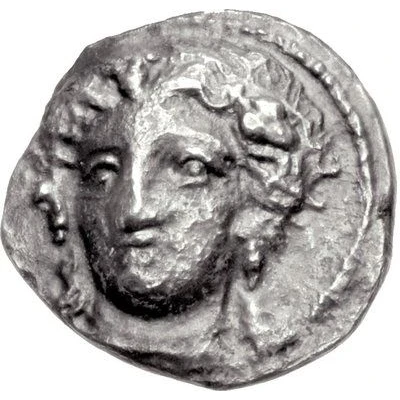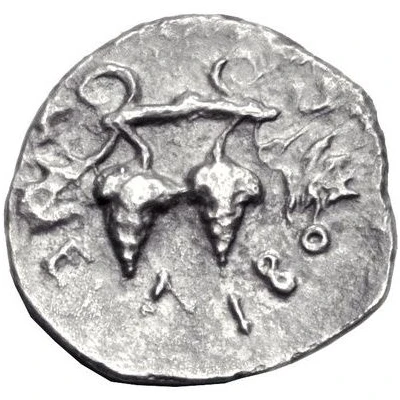


© Classical Numismatic Group, Inc.
Obol 352 BC - 344 BC
| Silver | 0.97 g | 12 mm |
| Issuer | Meliboia (Thessaly) |
|---|---|
| Type | Standard circulation coin |
| Years | 352 BC - 344 BC |
| Value | Obol (⅙) |
| Currency | Drachm |
| Composition | Silver |
| Weight | 0.97 g |
| Diameter | 12 mm |
| Shape | Round (irregular) |
| Technique | Hammered |
| Demonetized | Yes |
| Updated | 2024-10-10 |
| Numista | N#396015 |
|---|---|
| Rarity index | 100% |
Reverse
Two bunches of grapes and two vine leaves hanging from a vine branch.
Script: Greek
Lettering: Μ-E-Λ-IBO
Interesting fact
The Obol coin from Meliboia (Thessaly) was used as a form of currency in ancient Greece during the 4th century BC. The word "obol" comes from the Greek word "obelos," which means "roasting spit." This is because the coin was originally worth enough to buy a small roasting spit, or a pair of sandals. Over time, the value of the obol decreased, but it remained a widely used denomination in ancient Greece.